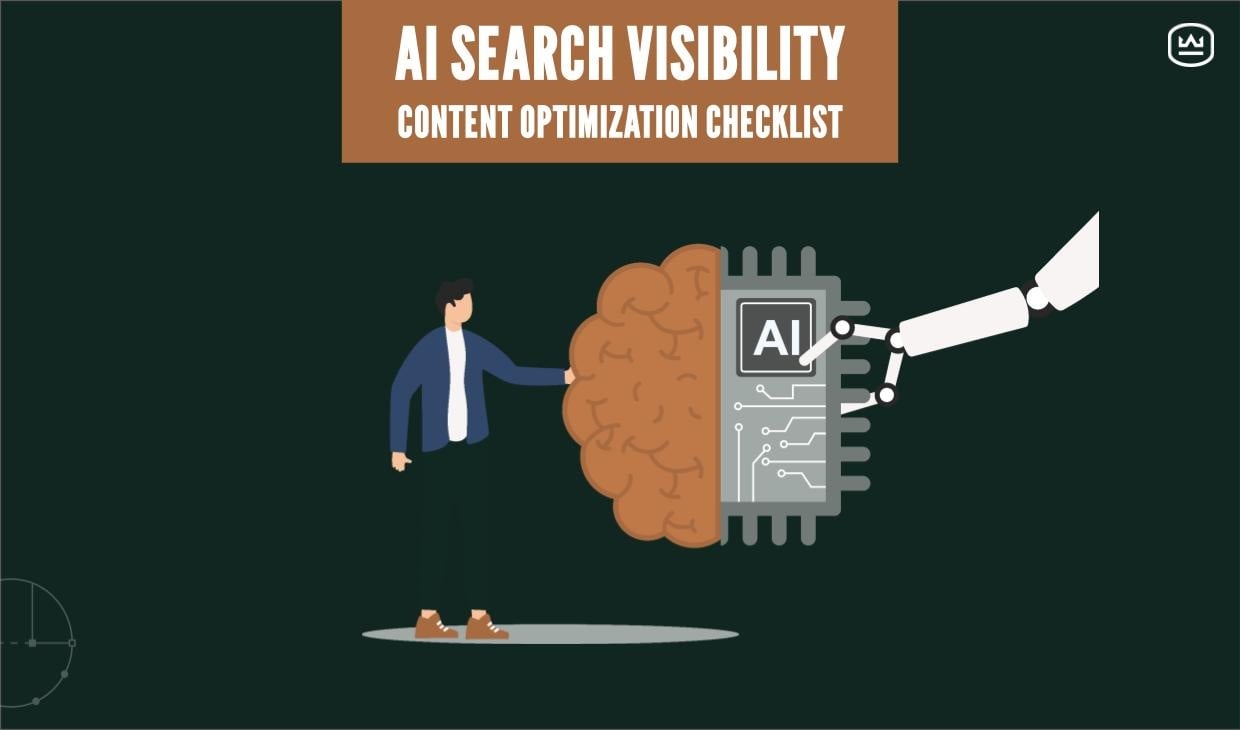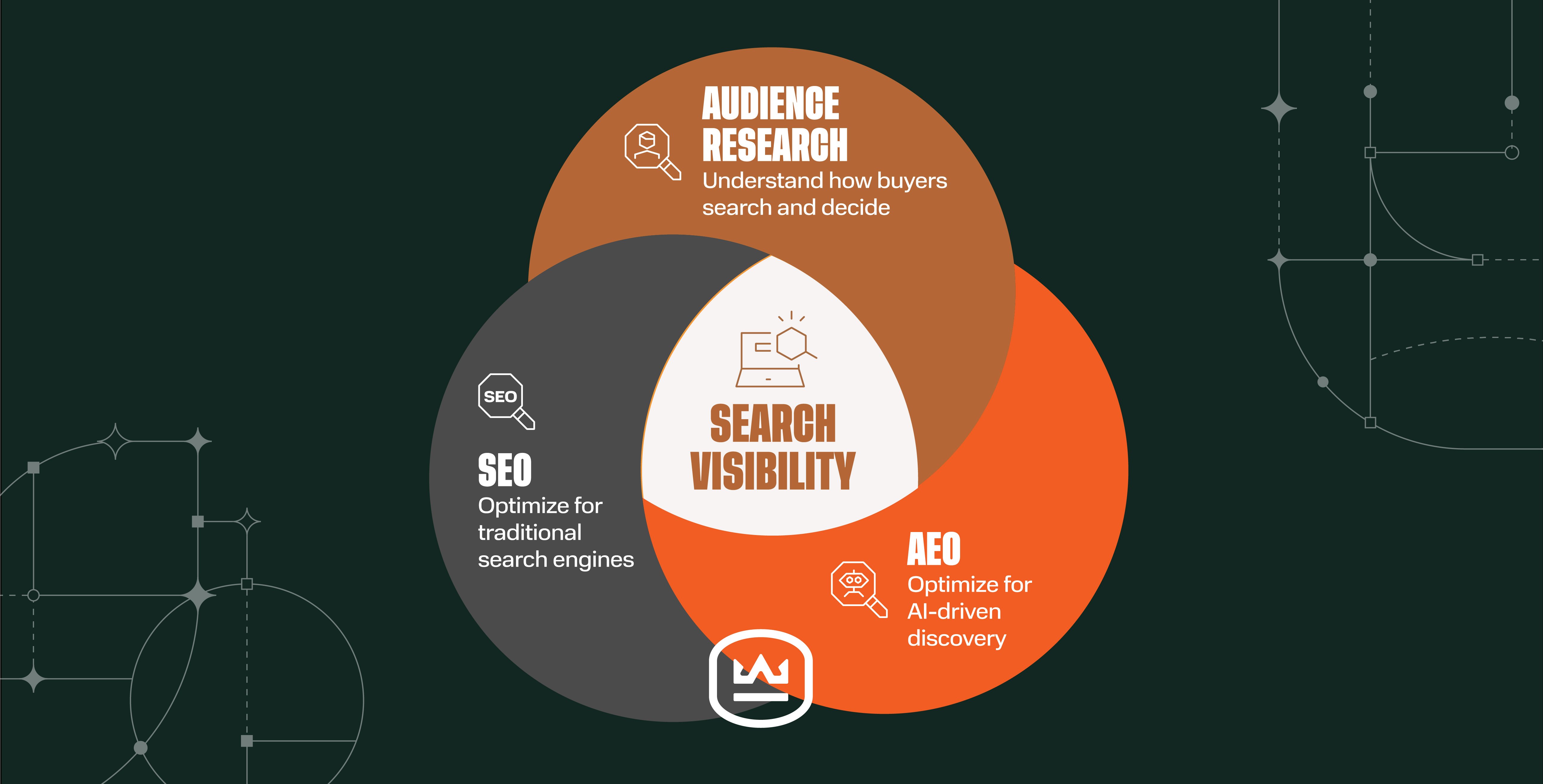5 Steps to Buyer’s Journey Mapping Success
Written by
Today's buyer has more control than ever. In fact, much of the decision-making and buying process may occur without any direct human-to-human interaction at all. That's a significant part of the customer journey taking place without a salesperson involved, and why B2B buyer’s journey mapping is so important!
The good news for marketers is that the journey still exists and buyers want and need knowledge throughout the process. But today’s industrial buyer’s journey typically isn’t linear and can’t be boiled down to a step-by-step process.
So, what does a B2B buyer’s journey map look like?
Defining Today’s Industrial Buyer’s Journey Map
We have all experienced our own buyer's journey to some degree, and it may help to relate our own decision-making processes when trying to define the experiences for others as part of our B2B inbound marketing strategy. You’ll likely find that, unlike a regular map that shows the fastest way to get from point A to point B, the customer journey map is filled with twists and turns.
There have been many attempts to chart out the path, from charts and channels to funnels and flywheels. But they all seem to fall short. So, what might the buyer’s journey really look like?
Do you remember the board game, Candy Land? Yeah, it’s more like that. The buyer’s journey for today’s prospects is filled with starts and stops, detours, forward leaps, reversing course and, at times, starting at the beginning all over again. It’s important to recognize this as you think about what the journey looks like for your company’s ideal prospects.
One thing is certain, however. Buyers expect sellers to understand their company's business model, to be subject matter experts and thought leaders, to provide valuable resources, consultation, education, etc., and to know their company's products and services like the backs of their hands.
Offering that knowledge in the form of the most relevant content, at the right time and in the right place, will help you attract and move potential buyers along the journey to becoming customers in today's world.
Use these five tips to help you fuel your content engine along the way:
1. Brainstorm Questions Buyers Are Asking
First, it's critical to understand what questions your buyer may ask along the journey. Let's start with 4 stages from a simple buyer's journey model that we’ve found helpful to use across all B2B industries:
- Awareness
- Consideration
- Decision
- Experience
At one time, these stages were displayed as a linear process, suggesting that a potential buyer would always start at the Awareness phase and work their way up. But as we’ve already suggested, getting to the Candy Castle isn’t a straight shot, and neither is the buyer’s journey that leads to a purchase. A triggering event may cause a buyer to enter the cycle at any time depending on their level of knowledge and prior buying experiences.
So, let’s explore each stage and who it might target.
The Awareness stage is for those who typically aren’t familiar with how to solve a problem or want to pursue an opportunity. For example, an oil refinery facilities manager for an above-ground storage tank company may ask,
"We’ve added capacity and now need additional storage tanks to hold it all. Which type is best for the products we store: welded steel, concrete, polyethylene, or bolted steel?"
During the Consideration stage, the buyer evaluates their options. The ideal buyer of the storage tank in the example above may ask,
"It looks like bolted steel and welded steel might be the best bets for our purposes (storing crude oil), because they don’t crack and don’t react with oil. Which one is right for me?"
Once the buyer determines the best options, it's time to select the best vendor/partner. In the Decision stage, the buyer in this example may conclude,
"Welded steel tanks have fewer potential weak points, so this is the best choice. There are two companies on my short list: Acme and XYZ. Which one is a better fit for our company?"
The customer Experience stage is applicable if up-sell or cross-sell opportunities exist among current clients. Existing customers will want to achieve the highest value from your partnership. For example,
"I might be interested in a maintenance contract; I wonder if it makes sense for us?"
Mapping out questions your buyers ask at each stage will help you clearly articulate what they are doing and thinking – and how they behave – so that you can develop content that precisely aligns with what they’re looking for.
2. Identify Members of the Buying Team
The buyer's journey should be mapped separately for each persona (target buyer). However, in the B2B world, it’s important to recognize they are rarely alone in making a purchasing decision. Decision by committee is often the case.
Identifying others on the buying team helps you identify new content ideas. Here's your opportunity to provide your target buyer with content they can pass along to other decision-makers on the team!
By knowing who else is involved at each stage, you can also prepare your buyer to “sell” it to the rest of the buying team. Educate them on how to articulate the ROI with an ROI calculator, for example, to prepare them for a meeting with the CFO.
Pro tip: If you’re a HubSpot user, you can use the Buying Roles feature in the CRM to track these.
3. Choose the Right Content Format
In the Awareness stage, choose simple, straightforward pieces that outline the problem and begin suggesting solution angles:
- Tip sheets
- How-to videos
- Checklists
- Blogs
- Google Ads
- Guides
- Social media posts
- Overviews
For Consideration, more in-depth pieces that are based on specific problems and aligned solutions make sense:
- Case studies
- eBooks
- Reports
- Whitepapers
- Video demonstrations
- Product comparisons
- Sample requests
In the Decision stage, choose formats that help you articulate value:
- Free assessments
- Trial offers or live demos
- Vendor features/services comparisons
- Product literature
- Price/value comparisons
In the Experience stage, "how-to" formats typically work best:
- Briefs
- Blogs
- Guides
- Videos
- Overviews
As a reminder, it’s important to consider both the type of content that aligns to the stage and the preferences and experiences of the buyer persona.
For example, simpler content (a checklist, tip sheet, blog, etc.) is best suited for the Awareness stage when the prospect is just starting to understand the problem and do initial research. But you also have to consider the persona…if you’re selling to mechanical engineers, a light, image-laden eBook may be less appropriate and less valuable than a document that includes technical specifications and detailed analysis.
LEARN MORE: TOFU, MOFU & BOFU: SERVING UP THE RIGHT CONTENT FOR LEAD NURTURING (VIDEO)
4. Be Where the Buyer Is
Step four is about identifying where the buyer looks for answers so that you can be found and can promote your content successfully. Consider where your buyer looks for information outside of Google. This may include trade shows, industry publications, associations and, of course, social media channels.
5. Optimize Your Content with Keywords and Relevant Terms
Even though it’s important to consider other channels, in Awareness and Consideration stages, Google is king. A whopping 94% of internet searches happen on Google or Google-owned properties, with many of those potential buyers returning to the platform during the course of their research.
With each interaction, they’ll dive deeper into each company’s specific offerings to see how they can address their pain points. What keywords and terms will they use to find information and, more importantly, find you?
RELATED: How to Map Your Customer Journey for More Helpful HubSpot Feedback Surveys
You could guess, but thankfully there are SEO tools that can help you identify relevant search terms and help your content climb SERP rankings. In general, we’ve found that long-tail keywords get you more quality traffic because you’re closely aligning with prospects’ specific needs. Another consideration is combining your efforts with paid media, such as Google Ads and social media advertising, to help increase your online presence based on keyword searches.
Putting it All Together
Once you've completed these five steps, it's time to put it all together as part of your B2B marketing strategy. Download our Buyer’s Journey Worksheet for an easy-to-use template and start offering the knowledge your next customers are waiting for!
Subscribe To Our Blog
Information. Insights. Ideas. Get notified every time a new Weidert Group blog article is published – subscribe now!
You May Also Like...

Search Engine Optimization
How Falcon Rebuilt Industrial AI Search Visibility in 2025

Search Engine Optimization
The New Search Visibility Checklist for AI-Era Content Marketing

Search Engine Optimization
SEO Isn’t Dead. It’s Evolving: How B2Bs Can Stay Visible in the Age of AI
Accelerate Your Growth with
Weidert Group
If you’re ready to explore a partnership, request a personalized consultation with our team.

